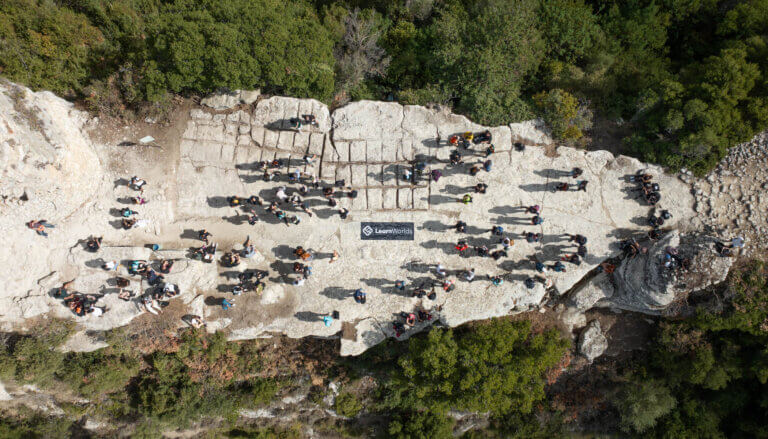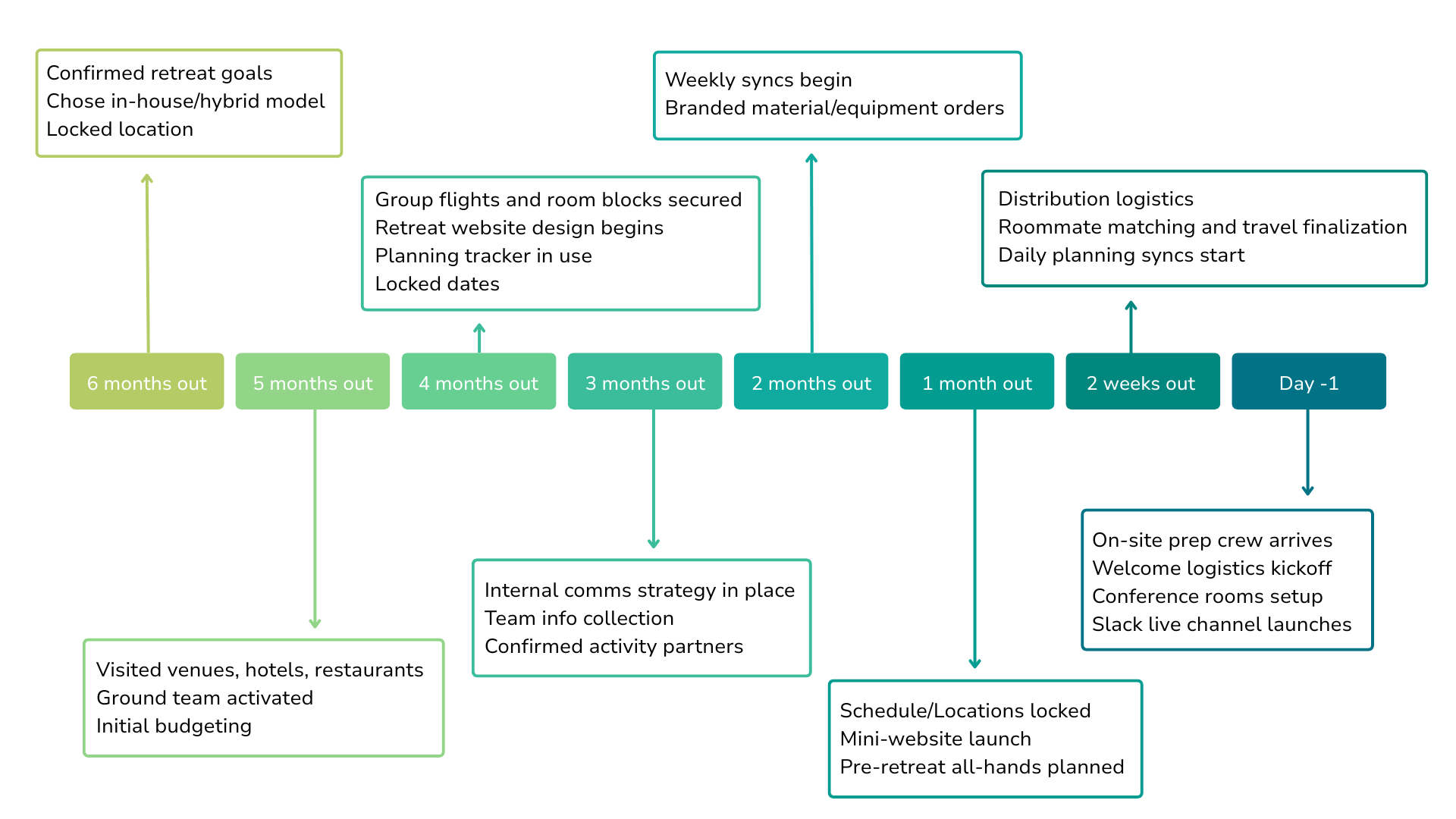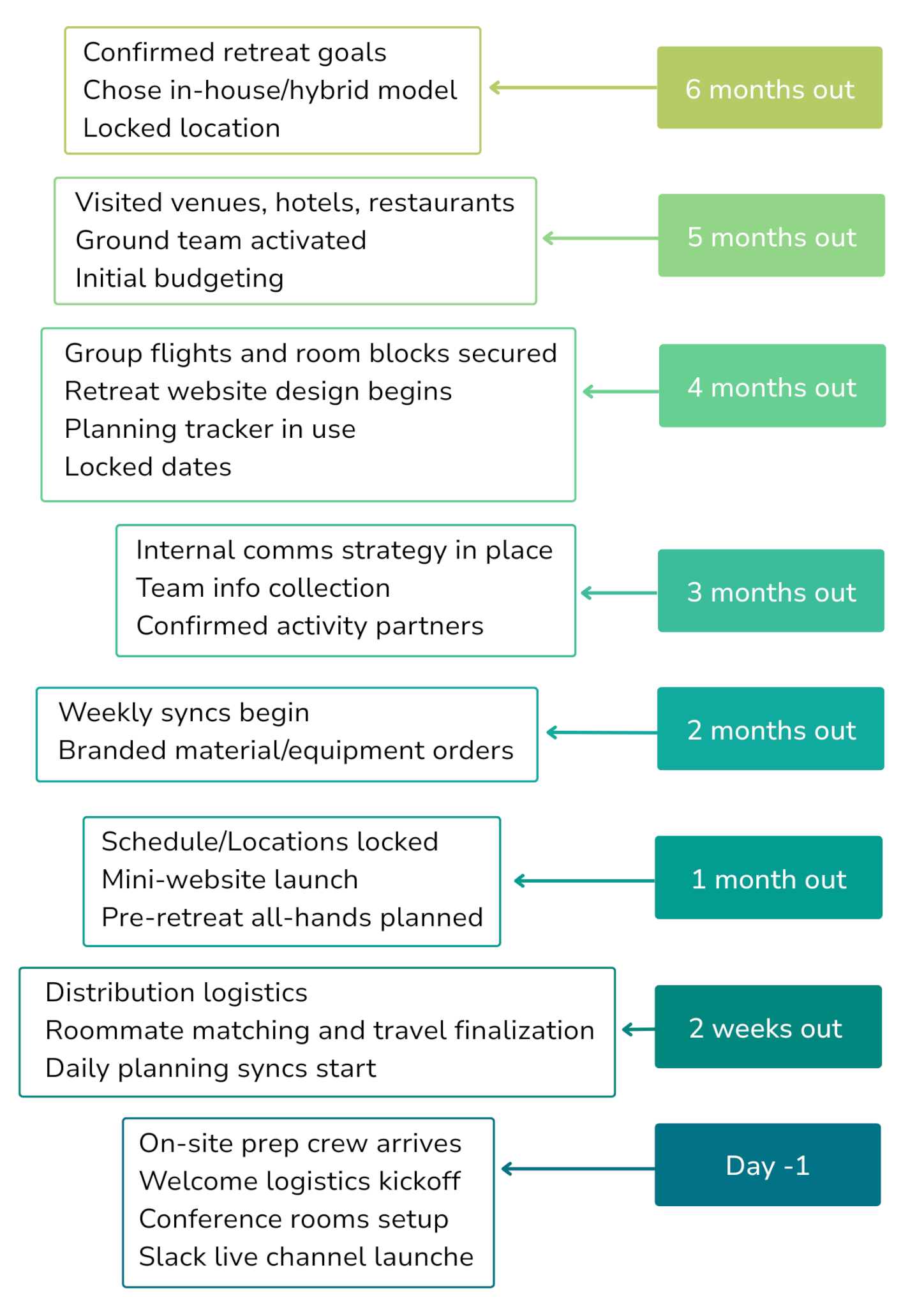Table of Contents
Crete, Greece – where the sea is impossibly blue, the mountains rise like stone guardians, and time slows just enough for clarity to catch up. It’s here, between the cobbled streets of Rethymno and the sun-warmed shores of Plakias, that for five days, the LearnWorlds team traded remote work for real connection, retreating not to escape their mission but to deepen it.
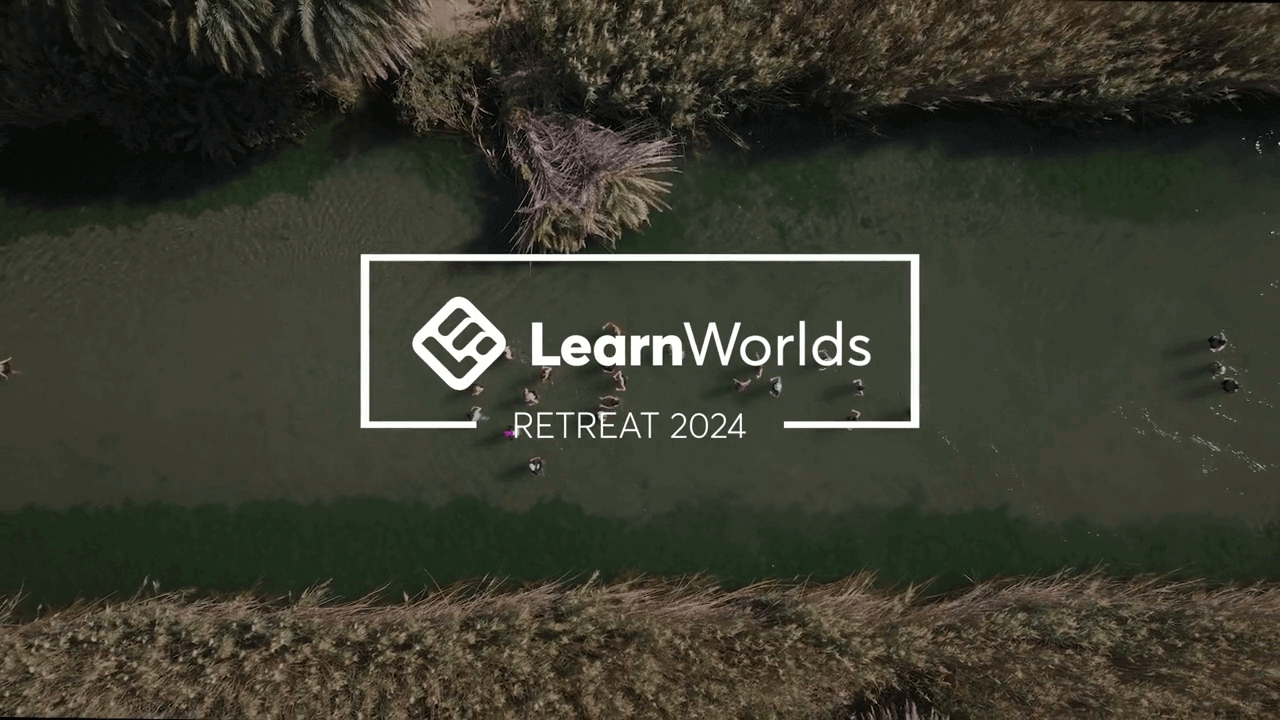
Idyllic picture, right? But how did we make it real? Let’s rewind a bit.
Done right, company retreats are more than just a change of scenery. They’re a strategic tool – a way to strengthen alignment, spark creativity, and reset team dynamics. But they don’t happen by accident. Retreats require structure, intention, and tradeoffs.
Here’s the approach we used to plan our most recent LearnWorlds retreat in Crete. If you’re thinking of doing something similar, these are the decisions that matter most – and the sequence we think works.
The seven decisions that shape a retreat
How that worked in practice
It’s one thing to write down 7 steps and it’s another to make a successful retreat in practice for a 135-person team while work continues as usual. Let’s go through it step by step.
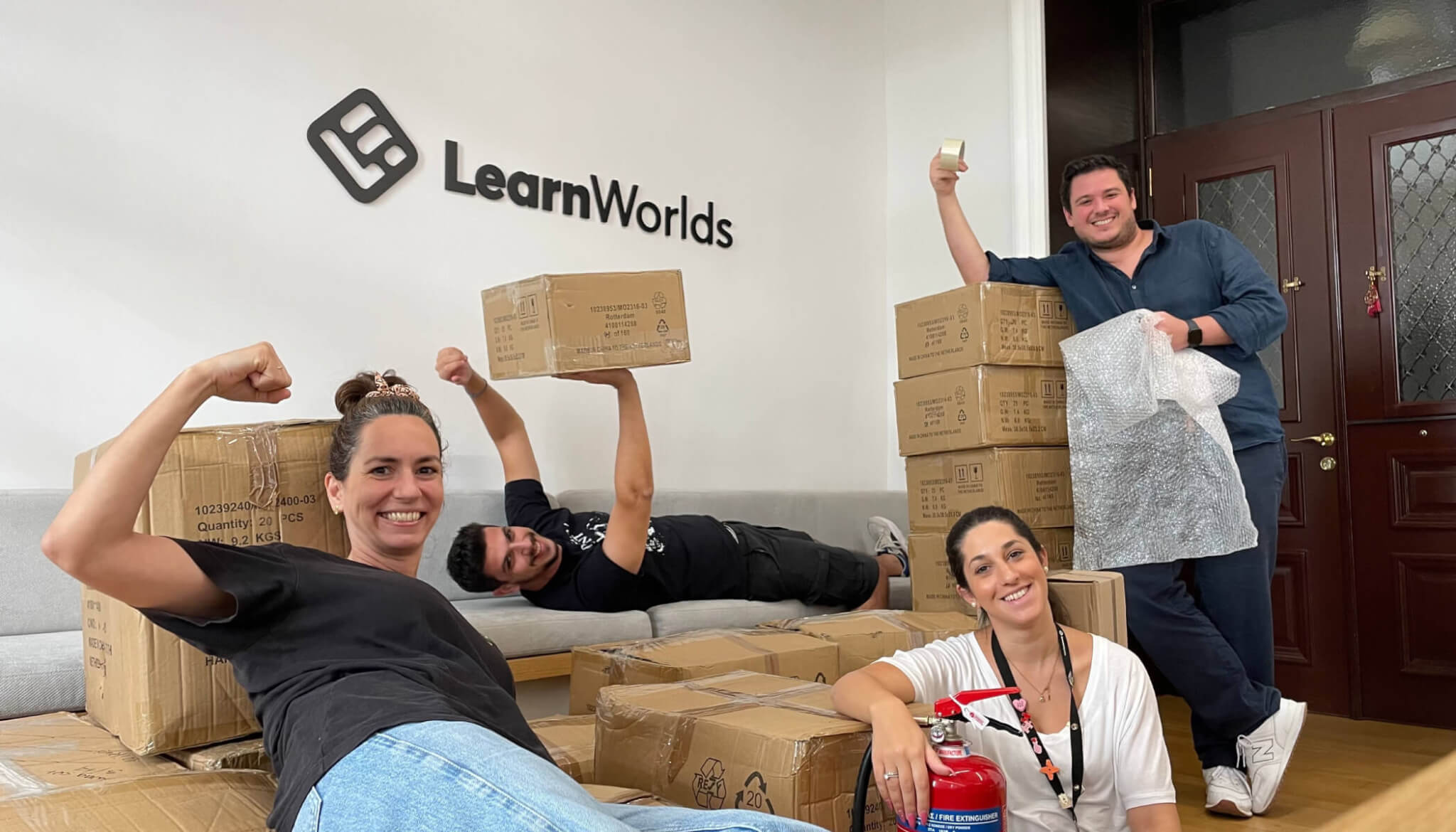
The 3 main goals that guided us through:
This retreat was amazing, really. I’ll never forget this experience and I’m so happy to realize how smooth and easy it was to bond with everybody and create new connections. I feel like we needed this and that we recharged our energies to end the work year by killing it.
Marketing Team member
A hybrid approach to organizing the retreat.
Because we had a deep local connection to Crete – our CTO and People Ops Manager are based there – we were able to be personally involved in every aspect, from scouting hotels and restaurants to selecting venues that felt authentic and welcoming. This gave us full control over the tone and quality of the experience, while allowing us to reflect LearnWorlds’ values through every detail.
At the same time, we brought in a local operations team to support us on the ground once we arrived – helping with last-minute logistics, activity coordination, transfers, and on-site setup. This hybrid approach gave us both ownership and flexibility, without overstretching the internal team during the retreat itself.
We chose Crete
Not just because we had team members there – though that gave us a major head start – but because it embodies the kind of retreat experience we wanted to create: warm, grounded, culturally rich, and logistically accessible.
Being based in Greece is a real advantage when planning offsites; the country offers an unbeatable combination of hospitality, natural beauty, local character, and infrastructure that can handle teams of all sizes. Crete, in particular, let us blend historic towns with rugged landscapes, calm beaches with adventurous hikes – all within a few hours’ reach. It felt authentic, not corporate. And it reminded us how lucky we are to be building a global company from a place that’s made for connection.
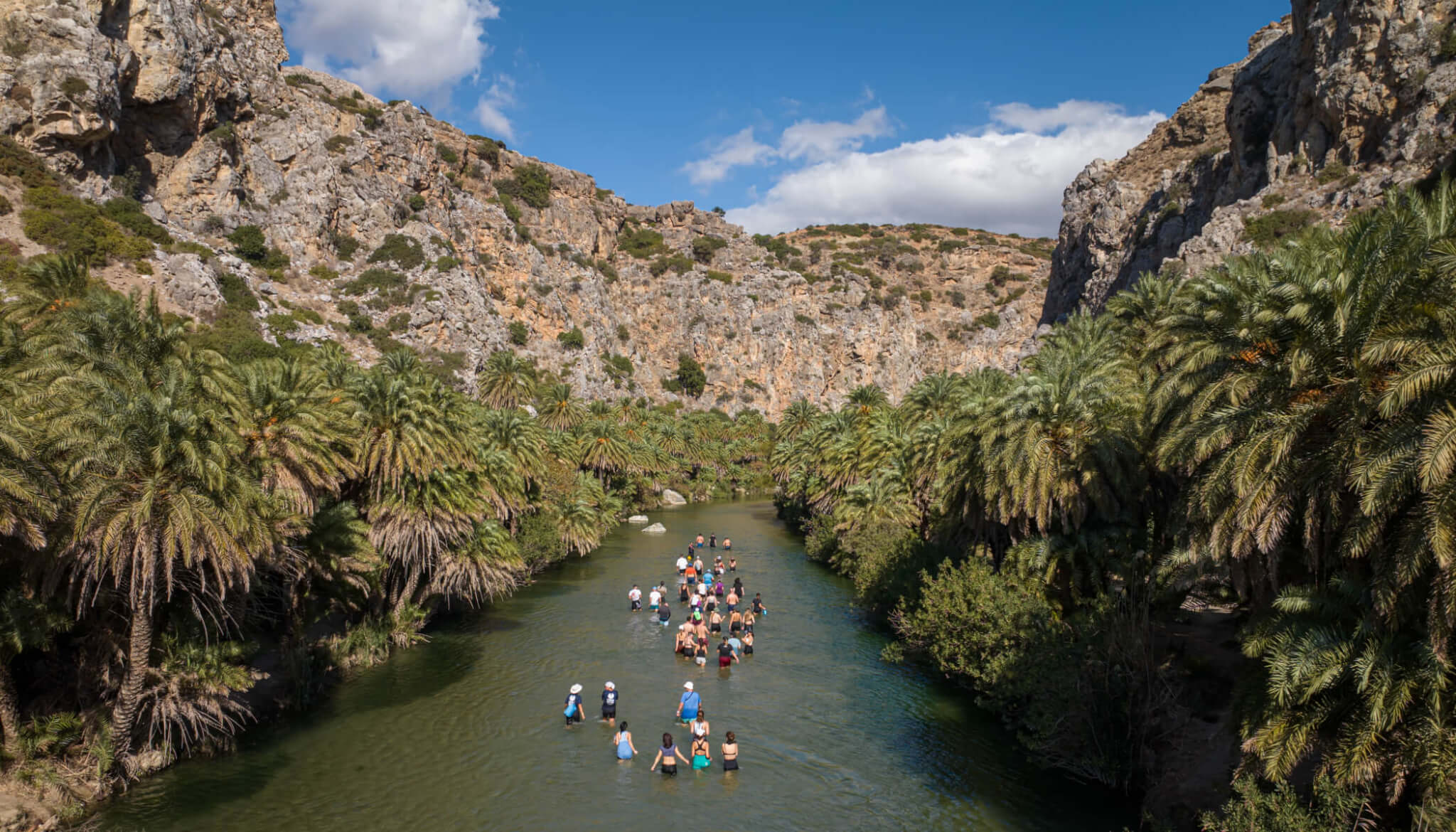
Locked our timeline 6 months in advance
We started planning the retreat about six months out. In hindsight, we made it work, but it left little room for error. With 135 teammates flying in from 18 countries, the logistics were intense: we booked dozens of flights, coordinated group transfers from five Greek airports, secured four separate hotels across two towns, and handled restaurant reservations, activity signups, swag preparation, and micro-requests – all in parallel with the day-to-day.
Our People team was in daily motion: building roommate lists, printing luggage tags, assigning buses, managing changes, and fielding hundreds of Slack DMs. At one point, our People Ops Manager was juggling hotel contracts, transfer routes, airport escort instructions, last-minute payment reconciliations and many more.
Started with clear ownership and then expanded into shared execution
Our management team – and founders in our case – played a key role in shaping vision, budget, and cultural direction. Their involvement set the expectations, ensured alignment, and gave the retreat its strategic backbone.
Our People Ops Manager led all things logistics: budgeting, contracts, flights, hotels, transfers, and payments. Our People Experience Manager handled the orchestration layer – designing the master tracking sheet, creating and sending forms, shaping policies with Legal, and fielding a steady stream of Slack questions. The People Director set the operational rhythm and ensured everything stayed aligned to purpose, while also arriving on-site early to oversee final setup before the team landed.
Meanwhile, our Creative and Web Design teams built the retreat website, logo, banners and swag kits. Our Brand & Social team directed on-site video capture with future storytelling in mind.
The local “ground crew,” guided by our Crete-based CTO, played a key role in scouting restaurants, venues, and activities. We started with bi-weekly meetings, switched to weekly two months out, and moved to three syncs per week in the final stretch. In the end, it was a cross-team effort – structured, collaborative, and always moving toward a shared goal.
Once everyone was finally there and we pressed play, the People team didn’t press pause. Eyes on the ball and hearts in the game, we were everywhere – coordinating, organizing, herding, preparing, energizing, and cheering everyone on. From last-minute logistics to emotional support, from holding the mic to holding the line, we kept the engine running behind the scenes. Tirelessly. Joyfully. Purposefully.
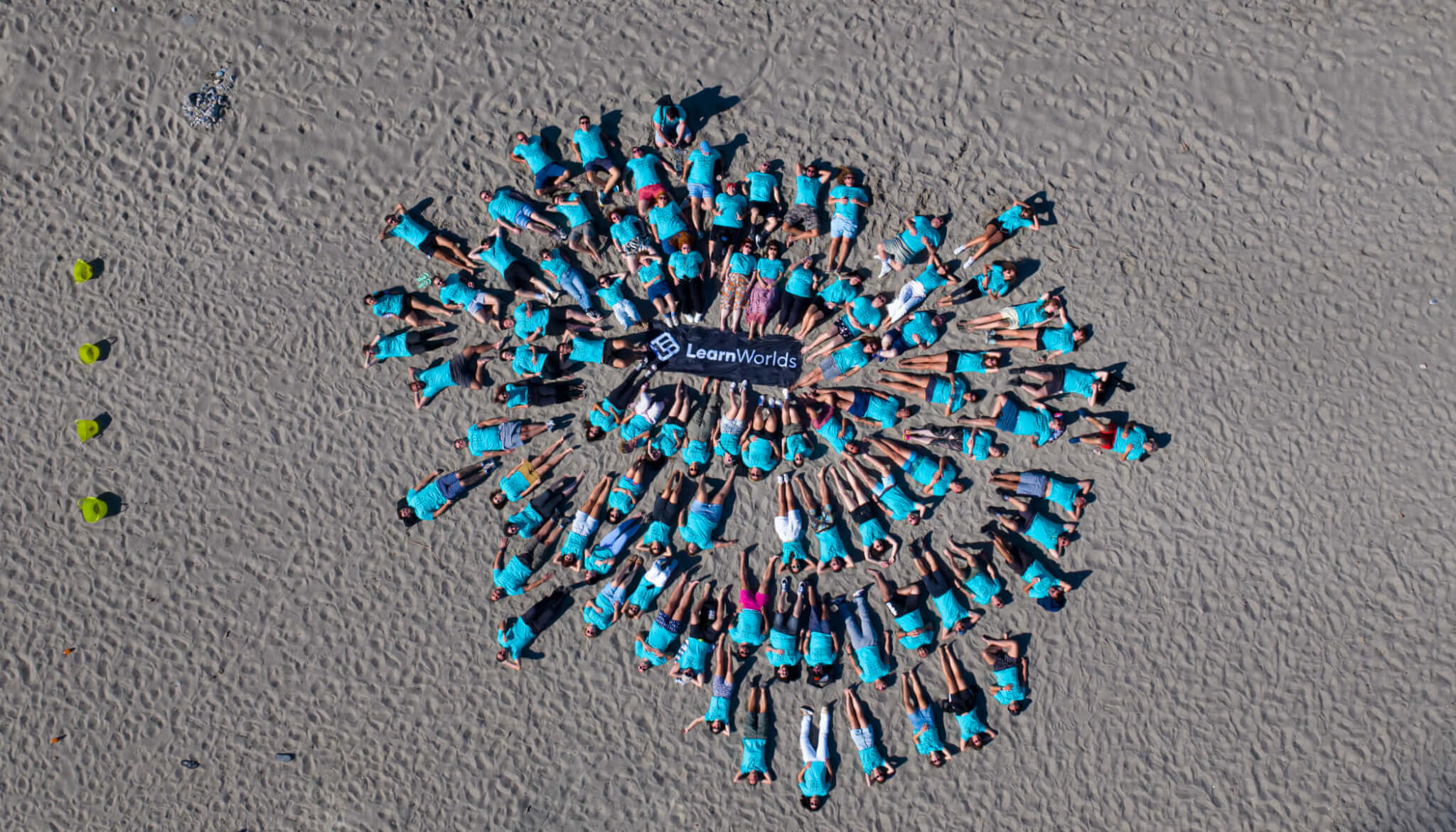
We split the retreat into two distinct phases: focus first, then flow
The first two days were work-centered – Day 1 opened with an all-hands led by our founders, setting the strategic tone, sharing our challenges and defining our culture, while Day 2 was dedicated to hands-on workshops where teams explored feedback, collaboration, and ways of working. From Day 3 onward, we shifted gears into full experience mode: hikes, boat cruises, distillery visits, beach games, parties and shared meals. The mix kept things intentional – every moment had a purpose, but no part of it felt forced.
The retreat in Crete last year was truly unforgettable. It was a pleasure meeting all my coworkers in person! We shared incredible moments filled with laughter, great food, meaningful conversations, and unforgettable activities. The experience brought us closer together and made me feel even more grateful to be part of such a wonderful team 🚀
Web Design Team member
We treated internal comms as part of the retreat experience – not just logistics
To get people involved from the start, we ran a company-wide vote on the most-used custom Slack emojis and phrases – which we then turned into stickers for the swag bags. Clear, human, and just the right amount of weird.
From there, we launched a dedicated retreat microsite as the single source of truth, featuring the schedule, maps, activity options, packing tips, policies. We also hosted a pre-retreat all-hands to walk through the plan, answer live questions, and ease any remaining concerns.
Closer to departure, we used our HRIS to create a new “retreat” section in every team member’s profile, uploading personalized details like flights, hotel allocations, and bus transfers. Weekly Slack posts helped build momentum, and once on-site, we launched a real-time Slack group to coordinate and mainly excite!
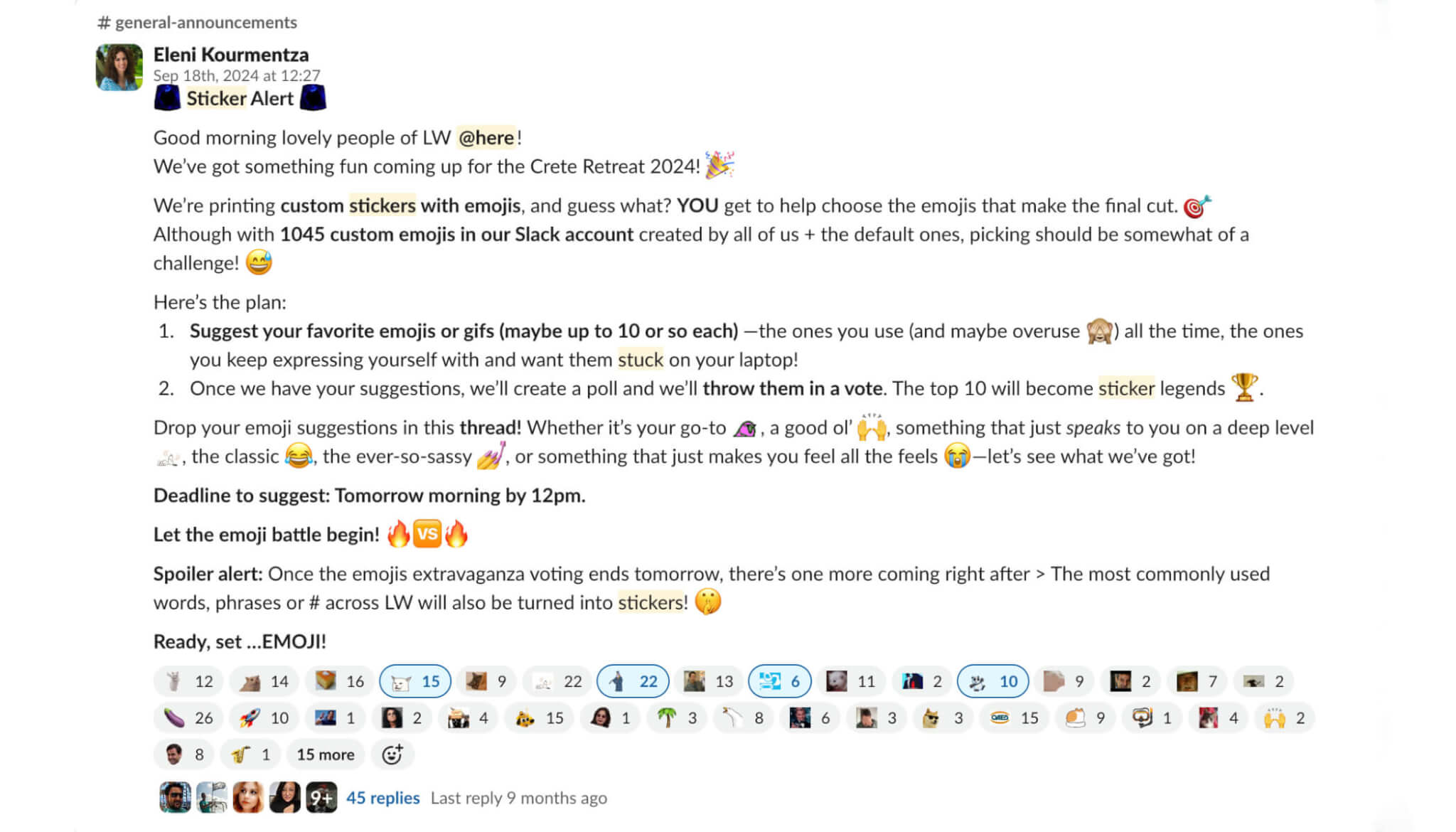
What we’d repeat – What we’d rethink
✅ Local knowledge made the difference. Without dedicated people on the ground, costs and friction would have risen fast.
✅ Clear internal roles kept momentum. One lead for logistics. One for experience. One for comms.
✅ Transparency mattered. Letting the team know how and why decisions were made helped them engage more fully.
If we did it again:
Final thought
Planning a retreat is operationally complex. But it’s also a culture-building opportunity you can’t get any other way. Start with your goals. Make tradeoffs with intent. Communicate clearly. Reflect on the outcome.
And treat the retreat not as a reward, but as a rhythm – part of how you build alignment, trust, and momentum in a distributed remote team.
Would you like to be part of our next chapters?
Check out LearnWorlds open roles here 👈

